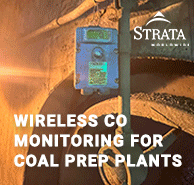
 











.gif)
|
Signature Sponsor


July 23, 2024 - The U.S. Department of Energy (DOE) has announced up to $65 million for Connected Communities 2.0, a funding opportunity announcement (FOA) to drive innovation to manage growing building, transportation, and industrial electric loads on the grid. This FOA seeks to validate grid-edge technology innovations in real-world situations and provide new tools for utilities, grid planners and operators, automakers and smart charge management service providers, and the communities they serve. This FOA accelerates progress toward the Biden-Harris Administration’s goal of a clean energy economy for all Americans by optimizing systems with grid-connected buildings and electric vehicles (EVs) powered by clean, distributed energy generation and demonstrating these advanced technologies are reliable, efficient, secure, and ready for wide-scale adoption. This FOA has two major topical areas:
Connected Communities 2.0 builds on successes and lessons learned from the first cohort of Connected Communities, launched in 2020, and DOE’s original smart neighborhoods in Georgia and Alabama. The first Connected Communities projects focused on integration of distributed energy resources to support a more variable grid. The 2.0 version aims to foster development of new technologies to ensure that the grid is flexible, resilient, and sized correctly to accommodate increasing loads from vehicle charging, data centers, and building and industrial electrification. Examples include managed EV charging, low-power appliances, smart panels, energy storage, energy efficiency, and rooftop solar, as well as innovative distribution and grid planning strategies. "It is vital that we plan for a power system that is secure, efficient, and flexible using grid edge technologies,” said Jeff Marootian, Principal Deputy Assistant Secretary for Energy Efficiency and Renewable Energy. “Connected Communities 2.0 will supercharge these efforts by forging innovations that can be replicated in communities across America while ensuring affordability, equity, and resilience.” The Connected Communities 2.0 FOA supports progress towards a decarbonized, equitable, and affordable electric power system. The FOA has three main goals:
To those ends, this FOA targets four areas for research, development, and demonstration:
This FOA incorporates many of the early lessons learned from the previous Connected Communities cohort by soliciting projects to create scalable solutions for grid planners and communities to achieve decarbonization and electrification goals. Achieving these goals require minimizing impacts to the distribution grid, mitigating infrastructure upgrade needs, improving customer experiences, and strengthening efficiency and community resilience. The FOA priorities align with the Biden-Harris administration’s Justice40 Initiative goals to ensure that at least 40% of federal investments flow to disadvantaged communities, recognizing that these communities often have access to the least robust energy infrastructure. Integration is essential to Connected Communities, and DOE’s Office of Energy Efficiency and Renewable Energy (EERE) and Office of Electricity are collaborating to support integrated energy system planning with a network of technology offices and industry partners. The Connected Communities 2.0 FOA is issued by EERE’s Building Technologies Office and Vehicle Technologies Office in collaboration with the Solar Energy Technologies Office, Industrial Efficiency and Decarbonization Office, and Geothermal Technologies Office. This FOA is part of EERE’s efforts to issue over $100 million for field demonstrations and other research to support better planning and operation of the electric grid. Required concept papers are due Aug. 20, 2024, at 5 p.m. E.T, and full applications are due Oct. 10, 2024, at 5 p.m. E.T. To learn more, visit the FOA landing page and join an informational webinaron July 29, 2024. |
 











|